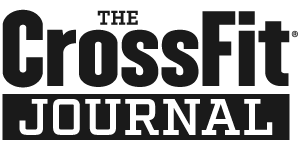Symptoms and Testing Positive
Firstly, all the papers recommend a minimum of 7-10days of rest from the onset of symptoms or first positive test for asymptomatic/mild cases. This increases anywhere up to 7-14days symptomless for moderate cases. What is rest? Little more than pottering around the house, making food and doing wordle. Most people will “have” covid for somewhere between 3-4 weeks but it’s estimated about 10-30% of people will have symptoms that continue past the 4 weeks and a smaller number continuing past 12 weeks.
Anyone with an underlying cardiovascular or pulmonary condition should consult a doctor prior to beginning exercise. They all also recommend further refraining from exercise and seeking medical advice if you experience any chest pain or tightness, irregular heartbeat, breathing issues, fainting, excessive fatigue or shortness of breath in everyday activities.
So once you’re through that initial period and have none of the symptoms listed above then how do you return to exercise?

Returning to Exercise
The recommendations center around three key areas; frequency, duration and intensity.
Frequency and Duration
Also known as training volume or how often and how long we workout for. The clearest recommendation here is to take your time building back to pre-covid volume and to listen to your body.
A recommendation to consider is the 50,30,20,10 approach. This approach is to start with a 50% decrease of previous frequency/duration and after a period (this could be a week or more) if comfortable then move to a 30% reduction and so on. How that might actually look, let’s take the example of an athlete who pre covid does 4 CF classes a week, an open gym session and plays a game of social sport.
| Crossfit Classes | Gym Sessions | Other Sport | |
| Pre covid training volume | 4 | 1 | 1 |
| Post covid Week 1 | 2 | 1 | |
| Post covid Week 2 | 2-3 | 1 | |
| Post covid Week 3 | 3 | 1 | |
| Post covid Week 4 | 4 | 1 | |
| Return to normal volume Week 5 | 4 | 1 | 1 |
This might happen over a longer period if the athlete needs more time to adjust to increased volume, the key thing here is to listen to your body! If there are high levels of fatigue then consider reducing volume back down and building slower e.g. increasing every 2 weeks.
We could also consider reducing the duration of sessions. In class that could look like a lesser number of rounds in a workout or weight lifting or reducing the time on an AMRAP.
Intensity
The papers also recommend slowly building back into intensity. So how do we reduce intensity while we build back up? It’s pretty simple actually we either;
- reduce distance
- reduce force
- and/or increase time
Distance could be within a rep i.e. doing a hang clean instead of a clean, or it can be the total distance i.e. the number of reps.
Force mainly refers to the external weight e.g. the barbell, KB, DB or it can be your body weight i.e. using a band.
Time could be time in a rep i.e. strict vs kipping or amount of time to complete the work, essentially going slower or adding forced rest.
So what could that look like? Let’s look at Thursday’s class this week for an option to how we could reduce intensity.
| Class Plan | Reduced Intensity Plan |
|
Every 2 mins for 5 rounds 9 Back Squat
– Load front squat to 85% |
Every 2.30mins for 4 rounds
– Load front squat to 65% |
|
‘For time’ 10 – 1 OH Squat 42.5/30kg HSPU Pull Up
|
12min AMRAP
|
Above is just an example, there are plenty of ways to reduce intensity and still complete class with everyone else. As with increasing frequency and duration we need to progressively increase intensity, slowly work back to full intensity over a number of weeks. Talk to the coach before class and they’ll be able to help with an option to reduce intensity.
Let’s finish how we started, make sure you consult a doctor if you have any concerns about your health! If you want to get back to some peak fitness then we’ve got you, take your time and listen to your coaches.
Below are the links to the articles I read and will give you more information if you’re keen to go full geek.
Senior Coach Jess Limbrick





